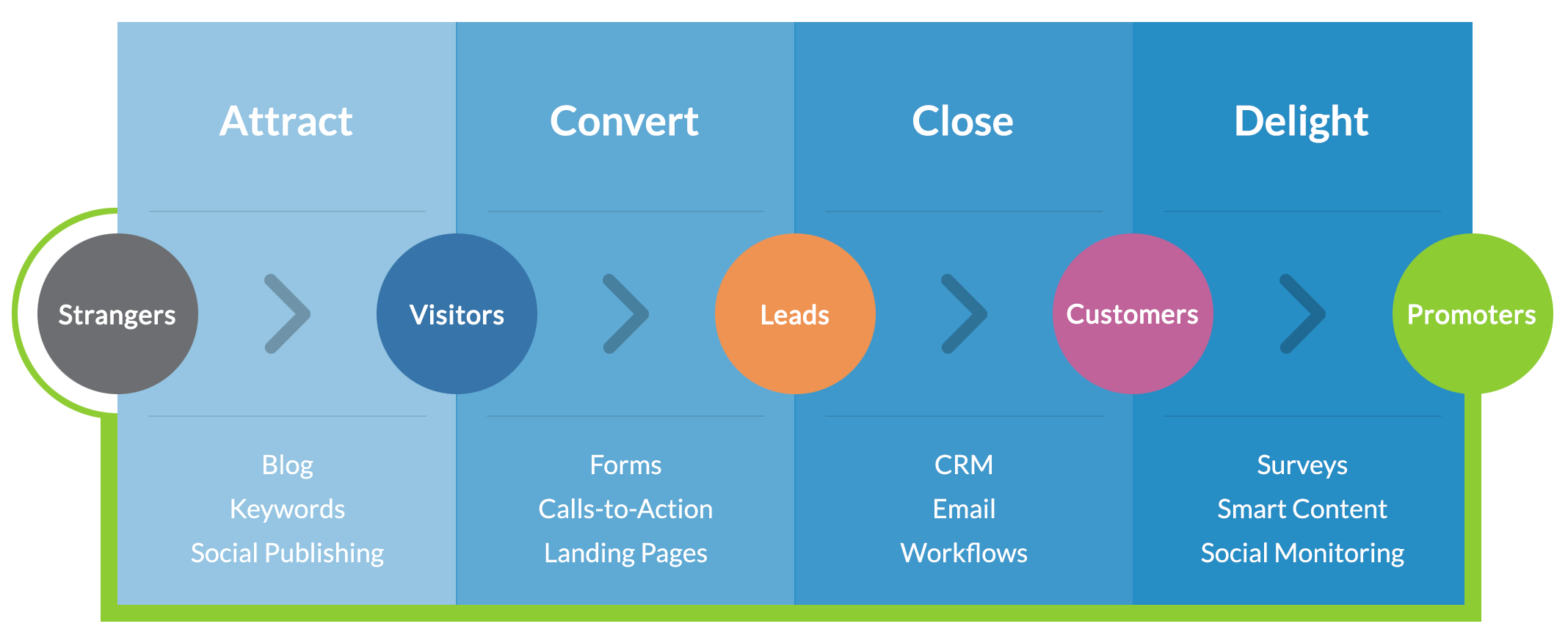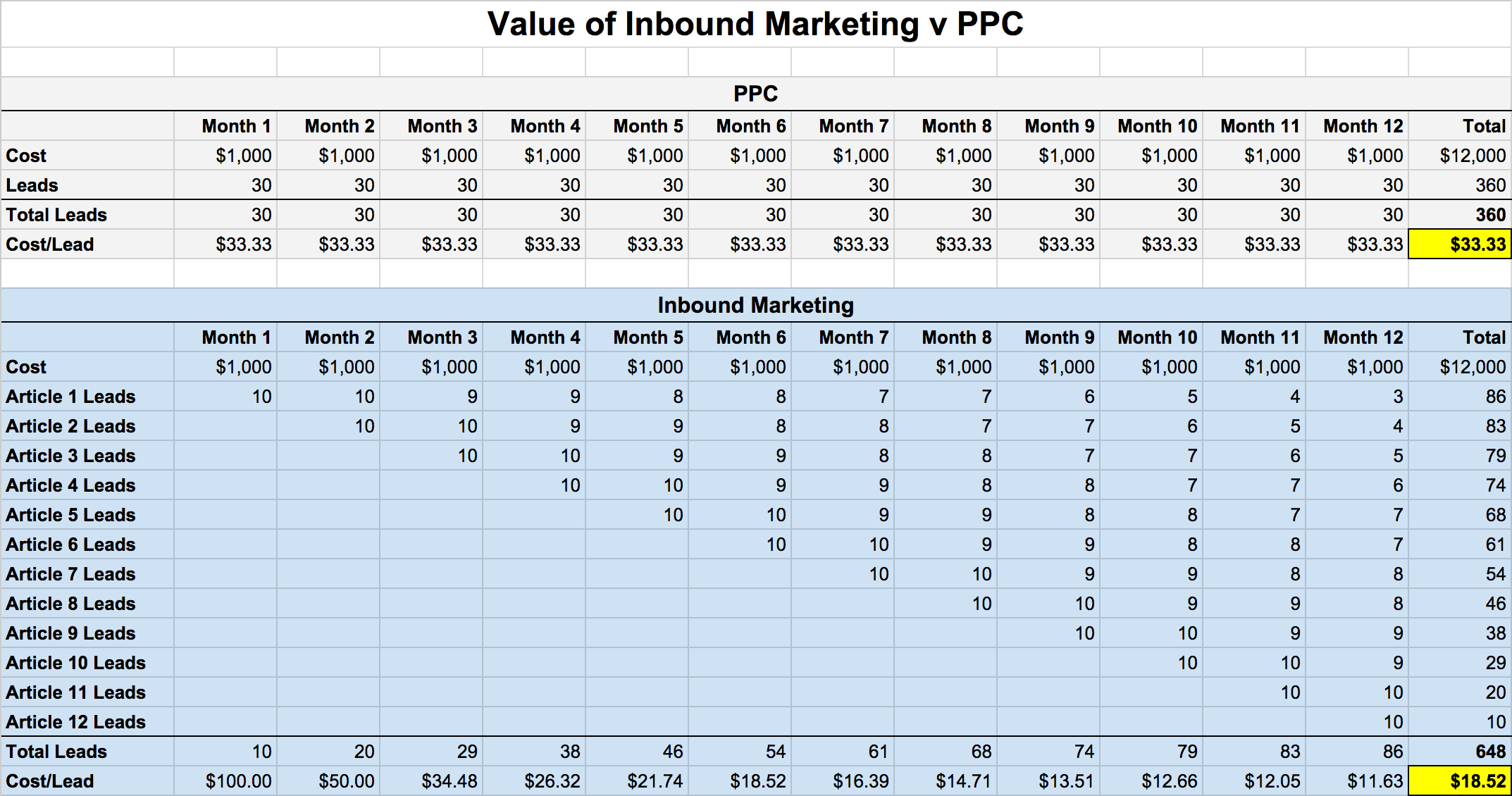Are you tired of watching your competition continue to grow through their online efforts while you’re struggling to gain any traction at all?
Are you convinced Inbound Marketing is exactly what you need to put your company in a position to overcome these competitors, but you’re having a difficult time getting buy-in from your CFO or CEO?
This article should provide all you need to prove to them that Inbound Marketing is exactly what your organization needs.
The Problem
The buying process has completely changed over the past 10-15 years, and unfortunately many companies have had a difficult time transitioning their marketing approach to address those changes. Today, 93% of all buying decisions start with a visit to the search engines and 57% of the sales cycle is complete before a prospect ever reaches out to a sales rep.
The traditional marketing playbook is broken and unfixable due to the availability of information to the consumer as well as technological advancements that have allowed consumers to eliminate the noise and chatter from advertisers. The power has significantly shifted, and companies who aren’t taking active steps to get in front of their potential customers early on in the buying process will eventually (if they aren’t already) begin to suffer serious declines in the amount of leads and customers they are receiving.
The Answer: Inbound Marketing
Inbound Marketing makes it far easier than ever to attribute money spent to revenue generated. It is a holistic, data driven methodology that leverages the way people buy today, while creating dividend-producing, long-term assets for your organization.

As our graphic illustrates above, the Inbound Marketing methodology assists you in attracting strangers to your company instead of annoying them by interrupting them with obnoxious advertising. Once you’ve attracted them you’ll have the opportunity to essentially walk alongside them throughout the entire sales process while proving your value along the way, and ultimately gaining them as a customer and delighting them to the point where they become a raving fan (or promoter)!
The Proof
According to the 2014 and 2015 State of Inbound report by Hubspot:
- Inbound costs 67% less per lead than traditional marketing
- Companies who blog produce 55% more leads than companies who don’t blog
- The number one concern of marketing professionals is proving an ROI for their marketing efforts
- 67% of companies who increased their Inbound budget received a higher year-over-year ROI
How it Works
Let’s say your kid is having a birthday and they want to have a zipline in your back yard. What do you do? You Google it! Once you do that, you find a helpful listing which leads you to call and have a conversation with a sales rep. Now if you’re over-protective like me, you’d tell your kid they aren’t getting a zipline, but this illustrates exactly how Inbound works. With Google alone, this scenario plays out over 3.3 billion times each day! The following illustration shows how Inbound Marketing has a compounding return.
The assets you create have a compounding effect because they continue to generate value (leads) over time without additional investment.
What about PPC?
Pay-per-click advertising has been something that many companies have turned to in lieu of creating content since they get immediate traffic. The following is the math which illustrates a low-performing comparison of PPC versus Inbound Marketing:
As you can see very quickly your cost per lead drops significantly while your assets continue to produce returns. And that’s the beauty of Inbound Marketing! In one year the simple model shows an 80% increase in leads with the same investment.
Here’s another way to look at PPC: You’re renting! With inbound, you own the assets used to generate visitors and leads. Let’s compare them quickly:
PPC (Renting)
- You’re renting the placement in search to generate the leads
- Immediate depreciation
- Rates can change dramatically and skyrocket based on competition (bidding)
- Run out of budget? You just ran out of leads.
- No residual benefit. Once it’s spent, it’s gone.
Inbound (Owning)
- Long-term assets keep generating leads without additional investment
- Increase company’s value with a predictable lead generation method, system, and process
- Get the same PPC data and more (tracks behavior in inbound ecosystem)
- Can attribute behavior to revenue generation
Don’t get us wrong, PPC is definitely a good tool for testing to make sure your messaging and landing pages are set up in the best way for conversion. But it’s important to note that 80% of all Internet users will opt to NOT click on a PPC ad, and instead will choose the organic search listing. So you’ll want to make sure you’re not limiting your market to only 20% of potential visitors.
You have a couple thing to do now. First, click the image below and download the Value of Inbound Marketing Excel document featured in this post:
Second, if you want to take it a step further and really impress your CFO or CEO, you can download our Marketing Calculator Pack below for free! This pack includes our Cost of Inaction Calculator and our Revenue Goals Worksheet. These will help you to begin to model out your revenue growth with real data from your company.






